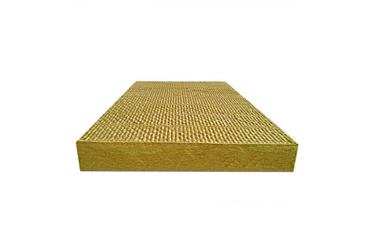Rock wool board and glass wool board look like many people, it is difficult to distinguish the difference between the two from the picture or appearance alone. Rock wool board manufacturer will tell you about the actual difference between rock wool board and glass wool board.
1. Glass wool belongs to a category of glass fiber and is an artificial inorganic fiber. Glass wool is a material that melts molten glass to form a cotton-like material. The chemical composition is glass and the surface is generally aluminum foil.
2. At present, the most widely used and most stable domestic A-grade materials are rock wool external wall insulation systems. Rock wool outer wall insulation system uses hydrophobic rock wool board as the thermal insulation layer of the system. Hydrophobic rock wool board uses natural rock as the main raw material and is mixed with a small amount of blast furnace slag. A mineral fiber made by high-temperature melting and centrifugal blowing is mixed with a certain proportion of binders and additives and pressed and cut by a pendulum.

Rock Wool Pipe
3. Comparison of technical data between rock wool pipe and glass wool insulation
1. Production technology: The production technology of rock wool board is three-dimensionally interwoven with the internationally advanced pendulum method, while glass wool cannot use this construction technology, and can only be produced by flat weaving. The strength can not meet the requirements of the wall.
2. Acidity coefficient: The acidity coefficient of rock wool board is ≥1.6, and the acidity coefficient of glass wool is ≤1.6. The higher the acidity coefficient, the higher the strength, high temperature resistance and durability of the board.
3. Strength requirements: As a grade A material (cotton product) that can be used for the wall, two strength requirements must be met, 1) the compression strength needs to be ≥40Kpa, and 2) the tensile strength perpendicular to the board surface needs to be ≥7.5 Kpa. These two indicators of glass wool are zero.
4. Dimensional stability: The dimensional stability of rock wool board is relatively stable ≤1%, while the dimensional stability of glass wool is ≥8%. Dimensional stability has a critical impact on the thermal insulation system. Poor dimensional stability can easily cause the thermal insulation board to expand or contract, leading to the destruction of the decorative layer and affecting the thermal insulation system.
5. Construction: Rock wool board uses a combination of sticking and nailing. This method greatly guarantees the safety of rock wool board, while glass wool cannot be plastered due to its characteristics, so it can only be anchored. Glass wool has no compressive strength, so the board itself is relatively soft and difficult to construct during anchoring. Its safety is also relatively reduced. The construction of rock wool board is easy, the flatness can be effectively controlled, and glass wool cannot guarantee its flatness.
6. Working temperature: The working temperature of rock wool board is ≥650 ℃; the working temperature of glass wool is ≥250 ℃. Although the same is A1 fireproof material, the difference between the two is quite obvious.
7. Fire resistance time: The fire resistance time of rock wool board is 4h; the fire resistance time of glass wool is 0.5h.
8. Thermal conductivity: The thermal conductivity of rock wool board is ≤0.040 (W / m · k) (Government regulation). At present, the actual thermal conductivity can be 0.036 (W / m · k) ~ 0.037 (W / m · k). . The thermal conductivity of 0.035 (W / m · k) is similar to that of glass wool.
9. Dry density: Relative to the dry density of rock wool board 140 ~ 160kg / m³, glass wool 10 ~ 16kg / m³ is much lighter, which is a great advantage of glass wool.
10. Water absorption: The water-repellent rate of water-repellent rock wool board is ≥99%, the water-absorption rate is ≤1kg / m³ (water absorption rate after 24 hours of water immersion), and the water-absorption rate of glass wool is ≥3kg / m³. At the same time, the dimensional stability of glass wool is worse than that of rock wool board. Once it absorbs water, it can easily expand and damage the insulation system.
Copyright © Tianjin Haimen Building Materials Co., Ltd. All Rights Reserved
Sitemap
